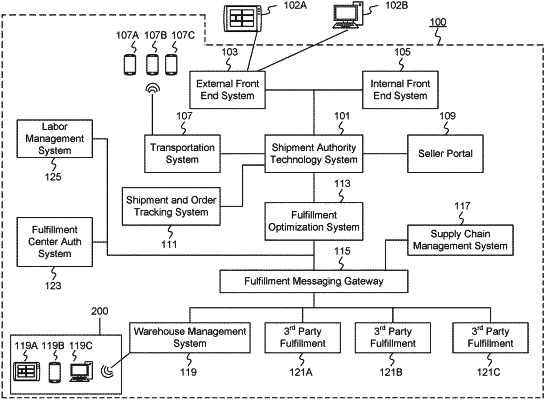| CPC G06Q 50/28 (2013.01) [G06F 30/20 (2020.01)] | 20 Claims |

|
1. A computerized system for automatic packing determination, comprising:
at least one processor; and
at least one non-transitory storage medium comprising instructions that, when executed by the at least one processor, cause the at least one processor to perform steps comprising:
receiving, from a remote system, an order comprising a plurality of items;
searching at least one data store to determine a first tag associated with the plurality of items;
wherein each first tag is associated with a fragileness factor that is determined based on a dimension of the plurality of items;
modifying dimensions of at least one item of the order using the fragileness factor;
selecting a data structure representing a first package, the data structure comprising a size of the first package;
iteratively simulating packing the items into the first package based on the modified dimensions, wherein simulating packing the items into the first package comprises:
repeatedly modifying an orientation of a first item of the plurality of items;
calculating a plurality of remaining spaces in the first package for each orientation of the first item; and
instantiating a data structure corresponding to the calculated remaining spaces in the first package to determine an optimal packing arrangement of a second item in the first package;
generating at least one set of instructions for packing the items into the first package based on the iterative simulation; and
sending the generated instructions to a second system for display, wherein the generated instructions are configured to cause the second system to display instructions for placement of the plurality of items to be packed on a user interface.
|